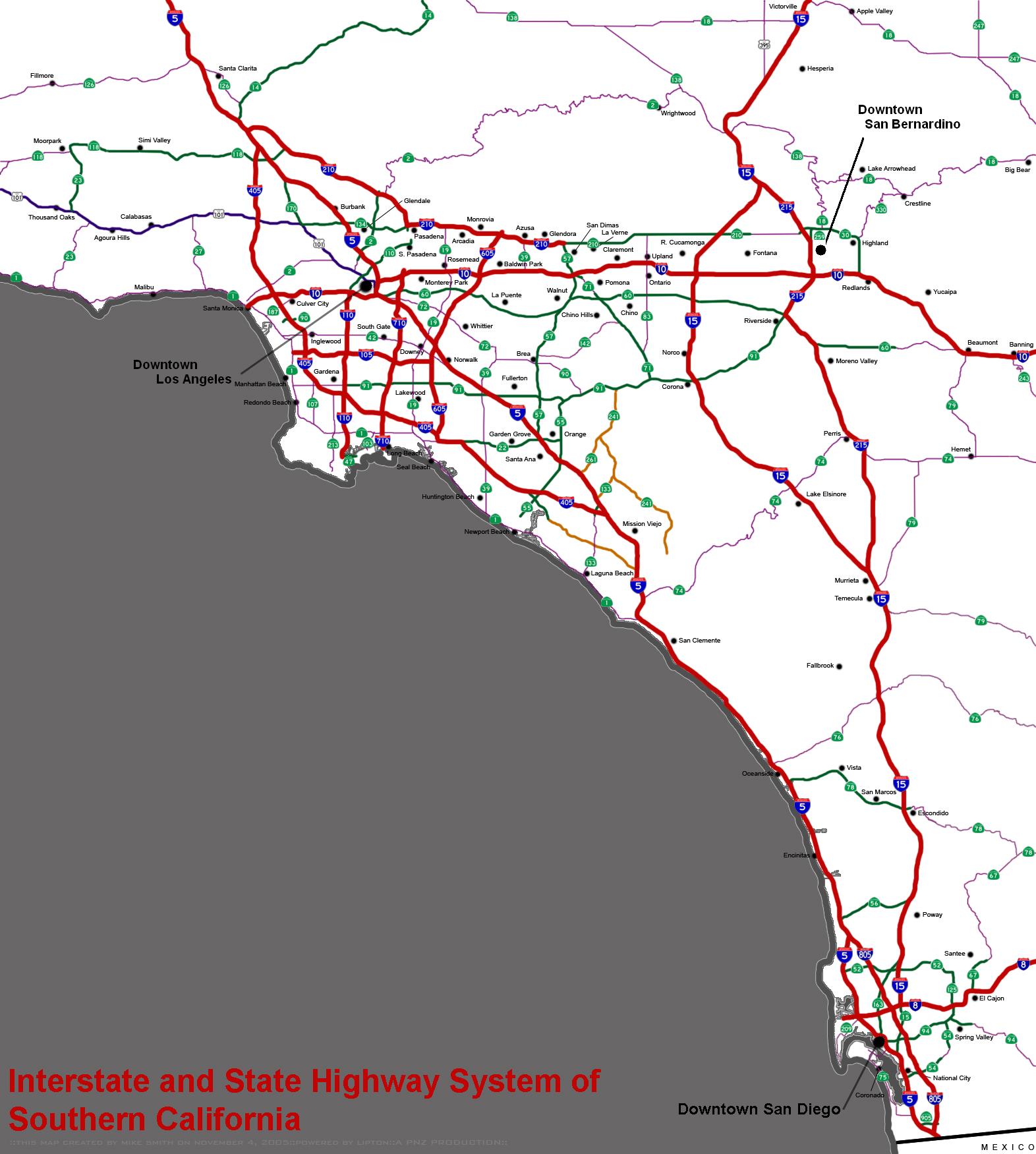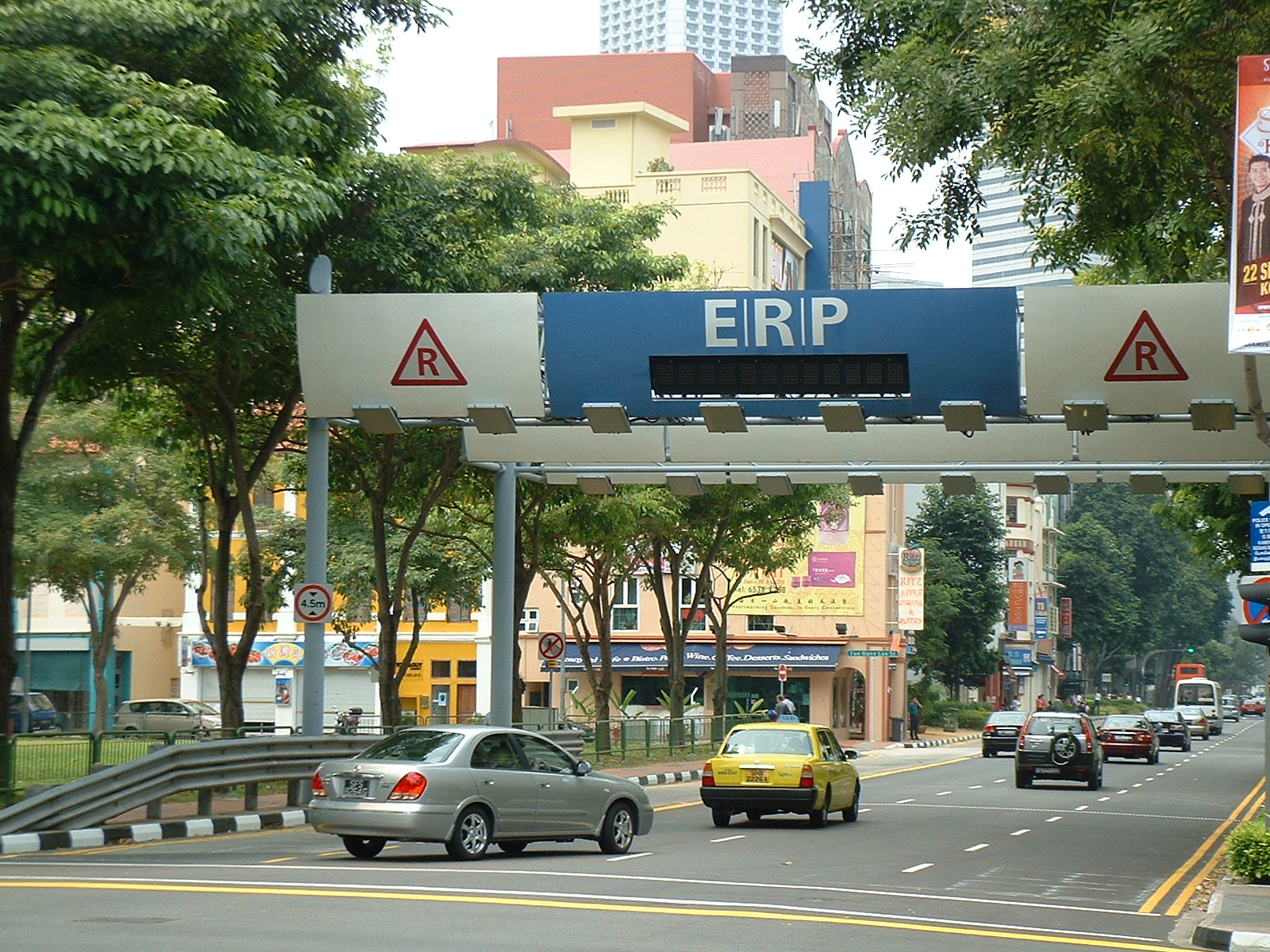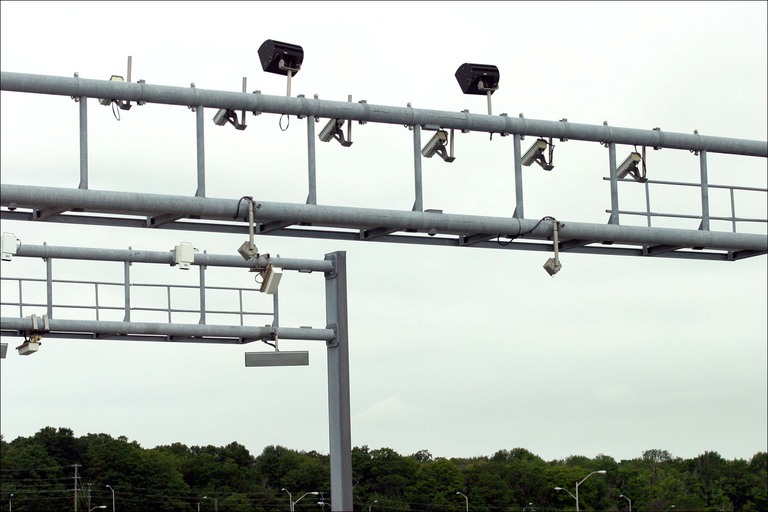|
California State Highway 261
State Route 261 (SR 261) is a state highway that forms part of the Eastern Transportation Corridor toll road system in Orange County, California. It runs from Walnut Avenue and Jamboree Road in Irvine north to SR 241. North of this interchange, SR 241 becomes part of the Eastern Transportation Corridor. SR 261 parallels Jamboree Road for its entire length. SR 261 does not directly connect with I-5 in Irvine, as Jamboree Road and other streets must be used to make the connection. Route description The southern end of SR 261 is in Irvine, splitting from Jamboree Road near Walnut Avenue, while Jamboree continues south as a locally-maintained divided highway to Barranca Parkway. SR 261 then runs north parallel to Jamboree Road towards Santiago Canyon Road ( CR S18) in the city of Orange near Irvine Lake. While Jamboree Road has an interchange with I-5, SR 261 does not and instead passes underneath the interstate without any connecting ... [...More Info...] [...Related Items...] OR: [Wikipedia] [Google] [Baidu] |
California Department Of Transportation
The California Department of Transportation (Caltrans) is an executive department of the U.S. state of California. The department is part of the cabinet-level California State Transportation Agency (CalSTA). Caltrans is headquartered in Sacramento. Caltrans manages the state's highway system, which includes the California Freeway and Expressway System, supports public transportation systems throughout the state and provides funding and oversight for three state-supported Amtrak intercity rail routes (''Capitol Corridor'', ''Pacific Surfliner'' and ''San Joaquins'') which are collectively branded as ''Amtrak California''. In 2015, Caltrans released a new mission statement: "Provide a safe, sustainable, integrated and efficient transportation system to enhance California’s economy and livability." History The earliest predecessor of Caltrans was the Bureau of Highways, which was created by the California Legislature and signed into law by Governor James Budd in 1895.Raymon ... [...More Info...] [...Related Items...] OR: [Wikipedia] [Google] [Baidu] |
National Highway System (United States)
The National Highway System (NHS) is a network of strategic highways within the United States, including the Interstate Highway System and other roads serving major airports, ports, military bases, rail or truck terminals, railway stations, pipeline terminals and other strategic transport facilities. Altogether, it constitutes the largest highway system in the world. Individual states are encouraged to focus federal funds on improving the efficiency and safety of this network. The roads within the system were identified by the United States Department of Transportation (USDOT) in cooperation with the states, local officials, and metropolitan planning organizations (MPOs) and approved by the United States Congress in 1995. Legislation The Intermodal Surface Transportation Efficiency Act (ISTEA) in 1991 established certain key routes such as the Interstate Highway System, be included. The act provided a framework to develop a National Intermodal Transportation System which "cons ... [...More Info...] [...Related Items...] OR: [Wikipedia] [Google] [Baidu] |
Southern California Freeways
The Southern California freeways are a vast network of interconnected freeways in the megaregion of Southern California, serving a population of 23 million people. The Master Plan of Metropolitan Los Angeles Freeways was adopted by the Regional Planning Commission in 1947 and construction began in the early 1950s. The plan hit opposition and funding limitations in the 1970s, and by 2004, only some 61% of the original planned network had been completed. The region is well known for its freeways, and they are considered a cultural touchstone. History Origins Southern California's romance with the automobile owes in large part to resentment of the Southern Pacific Railroad's tight control over the region's commerce in the late 19th and early 20th centuries. During his successful campaign for governor in 1910, anti-Southern Pacific candidate Hiram Johnson traveled the state by car, which was no small feat at that time. In the minds of Southlanders, this associated the autom ... [...More Info...] [...Related Items...] OR: [Wikipedia] [Google] [Baidu] |
Roads In Orange County, California
A road is a linear way for the conveyance of traffic that mostly has an improved surface for use by vehicles (motorized and non-motorized) and pedestrians. Unlike streets, the main function of roads is transportation. There are many types of roads, including parkways, avenues, controlled-access highways (freeways, motorways, and expressways), tollways, interstates, highways, thoroughfares, and local roads. The primary features of roads include lanes, sidewalks (pavement), roadways (carriageways), medians, shoulders, verges, bike paths (cycle paths), and shared-use paths. Definitions Historically many roads were simply recognizable routes without any formal construction or some maintenance. The Organization for Economic Co-operation and Development (OECD) defines a road as "a line of communication (travelled way) using a stabilized base other than rails or air strips open to public traffic, primarily for the use of road motor vehicles running on their own wheels", which ... [...More Info...] [...Related Items...] OR: [Wikipedia] [Google] [Baidu] |
State Highways In California
The state highway system of the U.S. state of California is a network of highways that are owned and maintained by the California Department of Transportation (Caltrans). Each highway is assigned a ''Route'' (officially ''State Highway Route'') number in the Streets and Highways Code (Sections 300-635). Most of these are numbered in a statewide system, and are known as ''State Route X'' (abbreviated ''SR X''). United States Numbered Highways are labeled ''US X'', and Interstate Highways are ''Interstate X''. Under the code, the state assigns a unique ''Route X'' to each highway, and does not differentiate between state, US, or Interstate highways. The California Highway Patrol (CHP) is tasked with patrolling all state highways to enforce traffic laws. Overview California's highway system is governed pursuant tDivision 1 of the California Streets and Highways Code which is one of the 29 California Codes enacted by the state legislature. Since July 1 of 1964, the majorit ... [...More Info...] [...Related Items...] OR: [Wikipedia] [Google] [Baidu] |
California Numbered Exit Uniform System
Exit numbers in the United States are assigned to freeway junctions, and are usually numbered as exits from freeways. Exit numbers generally are found above the destinations and route number(s) at the exit, as well as a sign in the gore. Exit numbers typically reset at political borders such as state lines. Some major streets also use exit numbers. Freeway exits in the United States are usually numbered in two formats: distance-based and sequential. Interstate Highways The Federal Highway Administration (FHWA) generally requires exit numbers (mile-based or sequential) on the Interstate Highway System; the FHWA established that requirement in 1970. The ''Manual on Uniform Traffic Control Devices'' (MUTCD) encouraged use of mileposts and exit numbering by 1961. The MUTCD mandated exit numbering in 1971. The FHWA granted California an exception due to the cost of installing and maintaining additional signage; the state was able to obtain a waiver because it had already built mo ... [...More Info...] [...Related Items...] OR: [Wikipedia] [Google] [Baidu] |
Congestion Pricing
Congestion pricing or congestion charges is a system of surcharging users of public goods that are subject to congestion through excess demand, such as through higher peak charges for use of bus services, electricity, metros, railways, telephones, and road pricing to reduce traffic congestion; airlines and shipping companies may be charged higher fees for slots at airports and through canals at busy times. Advocates claim this pricing strategy regulates demand, making it possible to manage congestion without increasing supply. According to the economic theory behind congestion pricing, the objective of this policy is the use of the price mechanism to make users conscious of the costs that they impose upon one another when consuming during the peak demand, and that they should pay for the additional congestion they create, thus encouraging the redistribution of the demand in space or in time, and forcing them to pay for the negative externalities they create, making users ... [...More Info...] [...Related Items...] OR: [Wikipedia] [Google] [Baidu] |
FasTrak
FasTrak is the electronic toll collection (ETC) system used in the state of California in the United States. The system is used statewide on all of the toll roads, toll bridges, and high-occupancy toll lanes along the California Freeway and Expressway System. As with other ETC systems, FasTrak is designed to eliminate the need for cars to stop to pay at toll booths, thus decreasing the traffic congestion traditionally associated with toll roads. Its use of technology to improve transit is in line with the U.S. Department of Transportation's Intelligent Transportation Systems initiative. Under California's government structure, the state's toll facilities are operated by various agencies and special-purpose districts. Concerned that they would each introduce different, incompatible ETC systems, the California State Legislature passed Senate Bill 1523 in 1990, requiring the California Department of Transportation (Caltrans) to develop a statewide specification that all these t ... [...More Info...] [...Related Items...] OR: [Wikipedia] [Google] [Baidu] |
Toll-by-plate
Video tolling (sometimes referred to as video billing, toll by plate, pay by mail, or pay by plate) is a form of electronic toll collection, which uses video or still images of a vehicle's license plate to identify a vehicle liable to pay a road toll. The system dispenses with collection of road tolls using road-side cash or payment card methods, and may be used in conjunction with "all electronic" open road tolling, to permit drivers without an RFID device (often referred to as a "Tag") to use the toll road. Technology In a video tolling system the license plate number can be extracted from an image either by using automatic number plate recognition (ANPR) technology or manual data-entry clerks. Video tolling is sometimes used in conjunction with "all electronic" open road tolling, to allow drivers without an RFID device (often referred to as a "Tag") to use the toll road. An all electronic system is a toll collection point that does not permit cash payment, and vehicle ident ... [...More Info...] [...Related Items...] OR: [Wikipedia] [Google] [Baidu] |
Open Road Tolling
Open road tolling (ORT), also called all-electronic tolling, cashless tolling, or free-flow tolling, is the collection of tolls on toll roads without the use of toll booths. An electronic toll collection system is usually used instead. The major advantage to ORT is that users are able to drive through the toll plaza at highway speeds without having to slow down to pay the toll. In some installations, ORT may also reduce congestion at the plazas by allowing more vehicles per hour/per lane. The disadvantage to ORT is that it relies on the honor system to the extent that without the presence of toll booths there is typically no physical means of preventing drivers who have no intention of paying the toll from accessing the road. Toll operators refer to such toll evasion as "leakage." To deter such behavior, toll operators can employ tools such as high-definition cameras to identify violators, and leakage can be offset in part or whole by fees and fines collected against offender ... [...More Info...] [...Related Items...] OR: [Wikipedia] [Google] [Baidu] |
Barrier Toll System
A barrier toll system (also known as an open toll system) is a method of collecting tolls on highways using toll barriers at regularly spaced intervals on the toll road's mainline. Motorists are typically charged a flat-rate toll, unlike toll roads with a ticket system where the toll rate is determined by the distance traveled or number of exits passed. Some highways use coin-drop machines on toll plazas. For toll roads whose ramps have no toll plazas, it is possible to exit the toll road before the mainline toll plaza, use local streets to bypass it, then re-enter the highway via an interchange on the other side of the toll plaza. Thus it is possible to drive on some barrier toll roads while paying less or not paying at all; this is the basis of the "open" descriptor. There are two main methods by which planners may prevent such toll evasion. One method is to simply remove highway entrances after and exits before toll plazas, so that detouring around toll plazas becomes such a ... [...More Info...] [...Related Items...] OR: [Wikipedia] [Google] [Baidu] |







